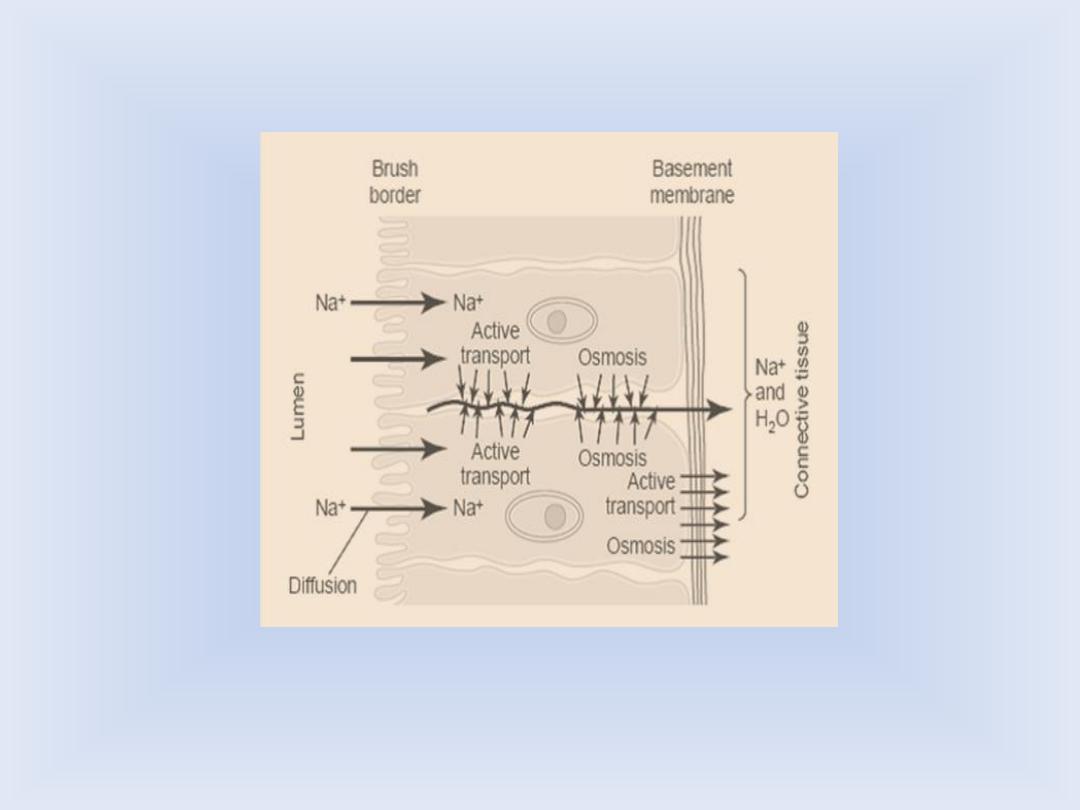
Cell Physiology
Assistant Professor Dr. Affan Ezzat
Textbooks:
1- Guyton and Hall Textbook of Medical Physiology
2- Ganong Review of Medical Physiology

Objectives:
By the end of this lecture the student will be able to:
• Describe the basic components of the cell membrane.
• Explain the transport process through cell membranes.
• Define diffusion and its types.
• List the factors that affect the net rate of diffusion.
• Define osmosis.
• Explain the active transport of substances through
membranes.
• Give examples on the types of active transport.

The basic living unit of the body is the cell.
Membranous Structures of the Cell
Most organelles of the cell are covered by membranes composed
primarily of lipids and proteins.
The Cell Membrane:
The approximate composition is proteins, 55%; phospholipids,
25%; cholesterol, 13%; other lipids, 4%; and carbohydrates,
3%.
Its basic structure is a lipid bilayer

The Cell Membrane Proteins:
Two types of proteins occur: integral proteins that protrude all
the way through the membrane and peripheral proteins that
are attached only to one surface of the membrane and do not
penetrate all the way through.
(1)structural channels (or pores)
(2) carrier proteins
(3) enzymes (catalyze chemical
reactions).
(4) receptors for water-soluble
chemicals

Peripheral protein
function almost entirely as
(1) enzymes
(2) controllers of transport of substances through the cell
membrane “pores.

.”
Glycocalyx
The Cell “
—
The Membrane Carbohydrates
Membrane carbohydrates occur in combination with
proteins or lipids in the form of glycoproteins or glycolipids. It has
several important functions:
(1) Have a negative electrical charge,
(2) The glycocalyx of some cells attaches to the glycocalyx of other
cells.
(3) Act as receptor substances for binding hormones.
(4) Some carbohydrate types enter into immune reactions.
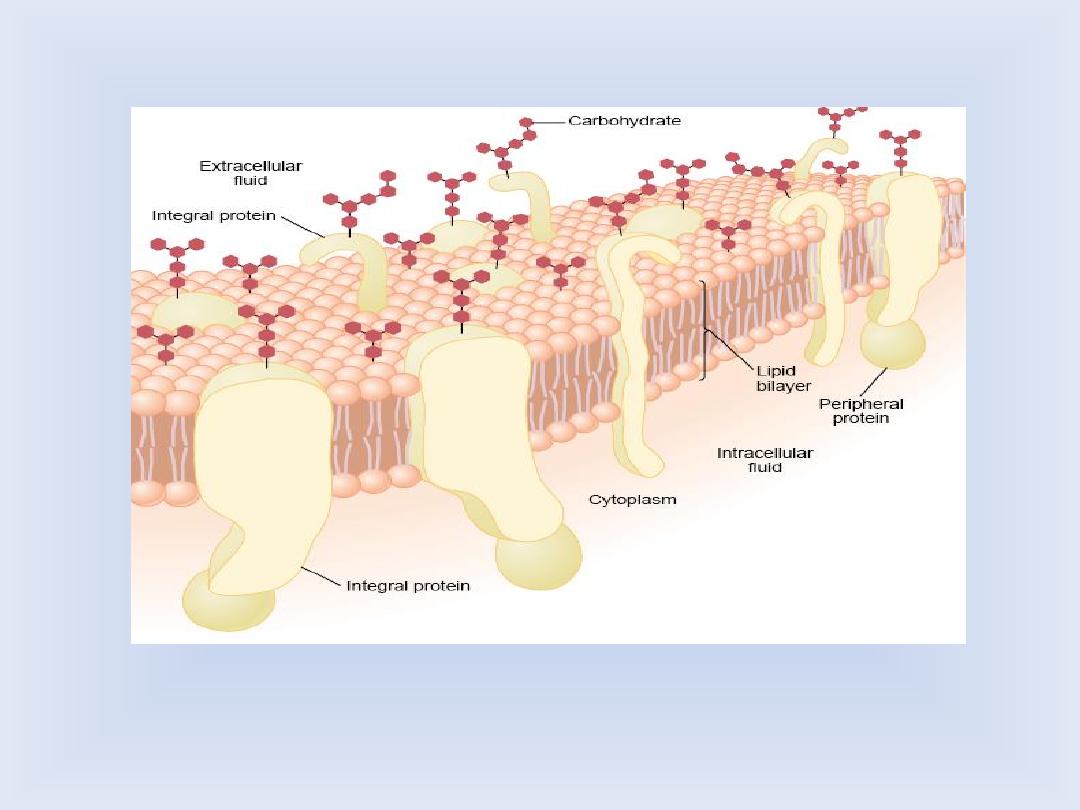

Transport through the cell membrane:
Either directly through the lipid bilayer or through the proteins, occurs
by one of two basic processes:
Diffusion
means random molecular movement of substances molecule by
molecule, either through intermolecular spaces in the membrane or in
combination with a carrier protein, the energy that causes diffusion is
the energy of the normal kinetic motion of matter.
movement of ions or other substances across
means
transport
Active
the membrane in combination with a carrier protein in such a way that
the carrier protein causes the substance to move against an energy
gradient, such as from a low-concentration state to a high-concentration
state, It requires an additional source of energy besides kinetic energy.


Diffusion through the Cell Membrane
Diffusion through the cell membrane is divided into two
subtypes called simple diffusion and facilitated
diffusion
Simple diffusion means that kinetic movement of
molecules or ions occurs through a membrane opening
or through intermolecular spaces without any interaction
with carrier proteins in the membrane.

Diffusion of Lipid-Soluble Substances through the Lipid
Bilayer.
One of the most important factors that determine how rapidly a substance
diffuses through the lipid bilayer is the lipid solubility of the substance.
For example, the lipid solubilities of oxygen, nitrogen, carbon dioxide,
and alcohols are high, so that all these can dissolve directly in the lipid
bilayer and diffuse through the cell membrane
Diffusion of Water and Other Lipid-Insoluble Molecules
through Protein Channels.
Water readily passes through channels in protein molecules that
penetrate all the way through the membrane. Other lipid-insoluble
molecules can pass through the protein pore channels in the same way
as water molecules if they are water soluble and small enough

Diffusion Through Protein Channels, and “Gating” of These
Channels
The protein channels are distinguished by two important
characteristics: (1) they are often selectively permeable to
certain substances, and (2) many of the channels can be opened
or closed by gates.

Gating of Protein Channels.
The opening and closing of gates are controlled in two principal
ways:
1.Voltage gating. The molecular conformation of the gate or of its chemical
bonds responds to the electrical potential across the cell membrane. Example
Na-K pump.
2. Chemical (ligand) gating
.
Some protein channel gates are opened by the
binding of a chemical substance (a ligand) with the protein; this causes a
conformational or chemical bonding change in the protein molecule that opens
or closes the gate. Example Acteylcholine channel.
Facilitated Diffusion.
Also called carrier-mediated diffusion, requires interaction of a carrier protein.
The carrier protein aids passage of the molecules or ions through the membrane
by binding chemically with them and shuttling them through the membrane.
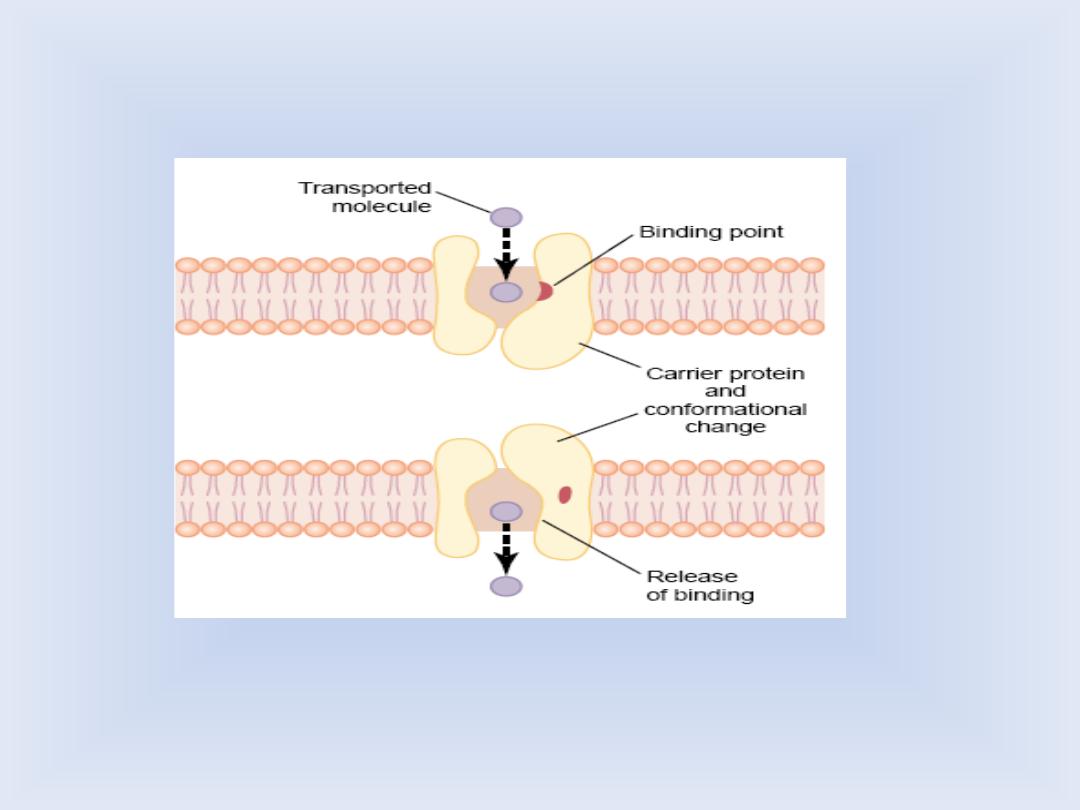

Factors That Affect the Net Rate of Diffusion
What is usually important is the net rate of diffusion of a
substance in the desired direction. This net rate is determined
by several factors.
(1)Effect of Concentration Difference on Net Diffusion through
a Membrane.
The rate at which the substance diffuses inward is proportional to the
concentration of molecules on the outside, because this concentration
determines how many molecules strike the outside of the membrane each
second .
Net diffusion
μ (Co - Ci)
in which Co is concentration outside and Ci is concentration inside.
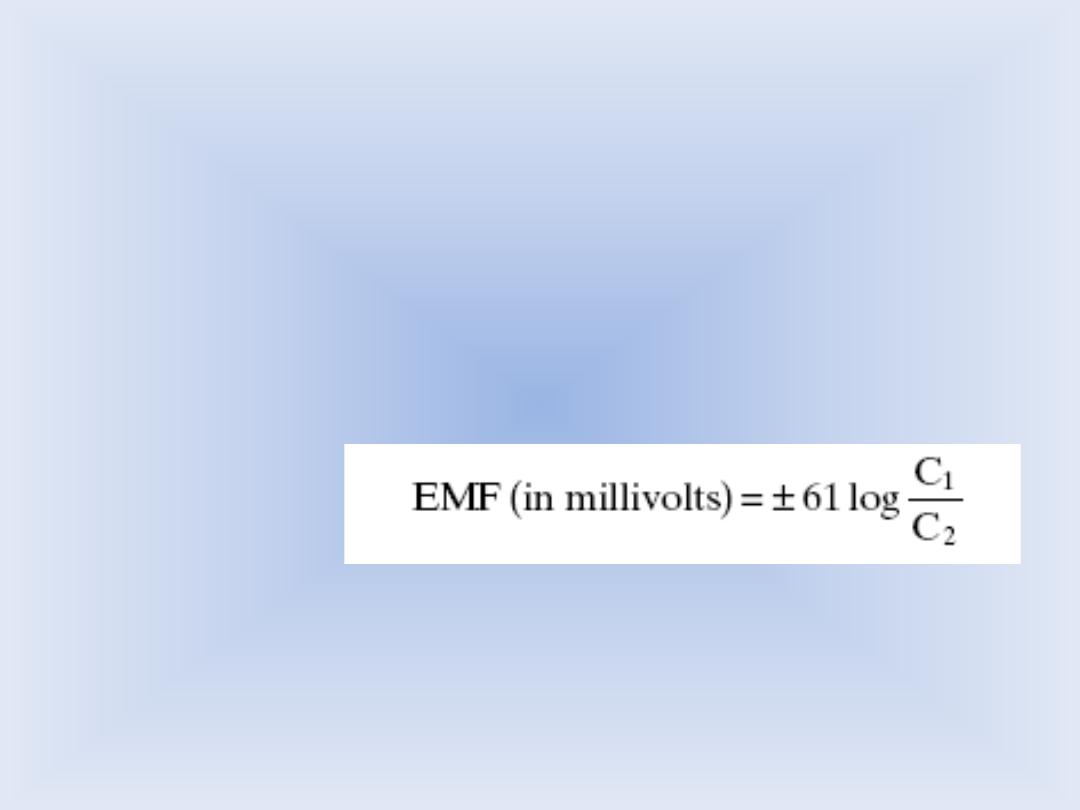
(2)Effect of Membrane Electrical Potential on Diffusion of
Ions—The “Nernst Potential.”
If an electrical potential is
applied across the membrane, the electrical charges of the ions
cause them to move through the membrane even though no
concentration difference exists to cause movement. At normal body
temperature (37
°C), the electrical difference that will balance a
given concentration difference of univalent ions
—such as sodium
(Na+) ions
—can be determined from the following formula, called
the
Nernst equation:

(3)Effect of a Pressure Difference across the Membrane.
Pressure means the sum of all the forces of the different molecules striking a
unit surface area at a given instant. Therefore, when the pressure is higher
on one side of a membrane than on the other, this means that the sum of all
the forces of the molecules striking the channels on that side of the
membrane is greater than on the other side. The result is that increased
amounts of energy are available to cause net movement of molecules from
the high-pressure side toward the low-pressure side.
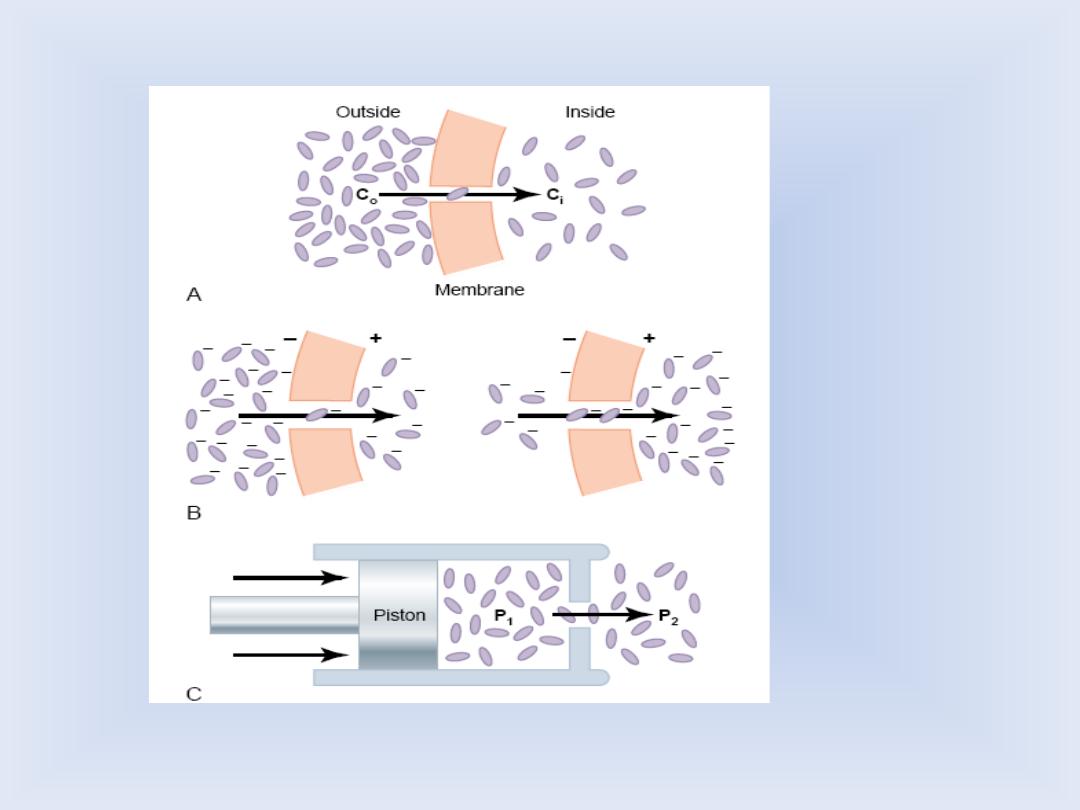
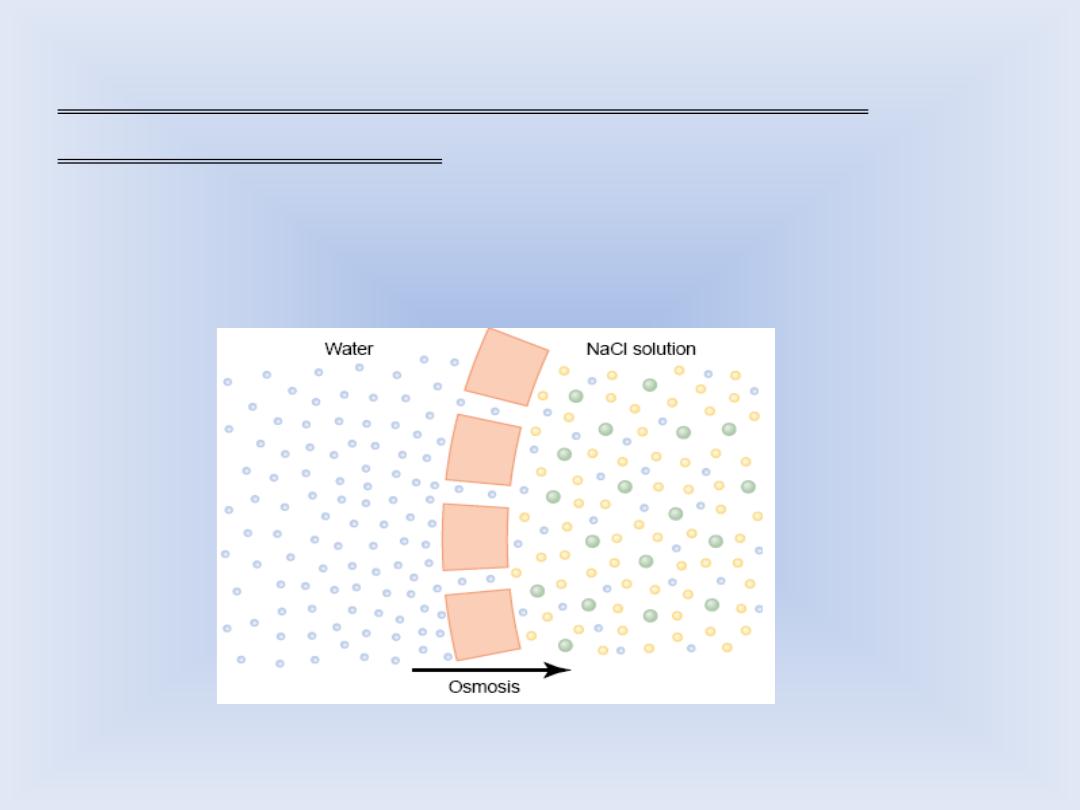
Osmosis Across Selectively Permeable Membranes—
“Net Diffusion” of Water
net movement of water caused by a concentration
difference of water

Osmotic Pressure
If pressure were applied to the sodium chloride solution,
osmosis of water into this solution would be slowed,
stopped, or even reversed. The exact amount of pressure
required to stop osmosis is called the osmotic pressure of
the sodium chloride solution.
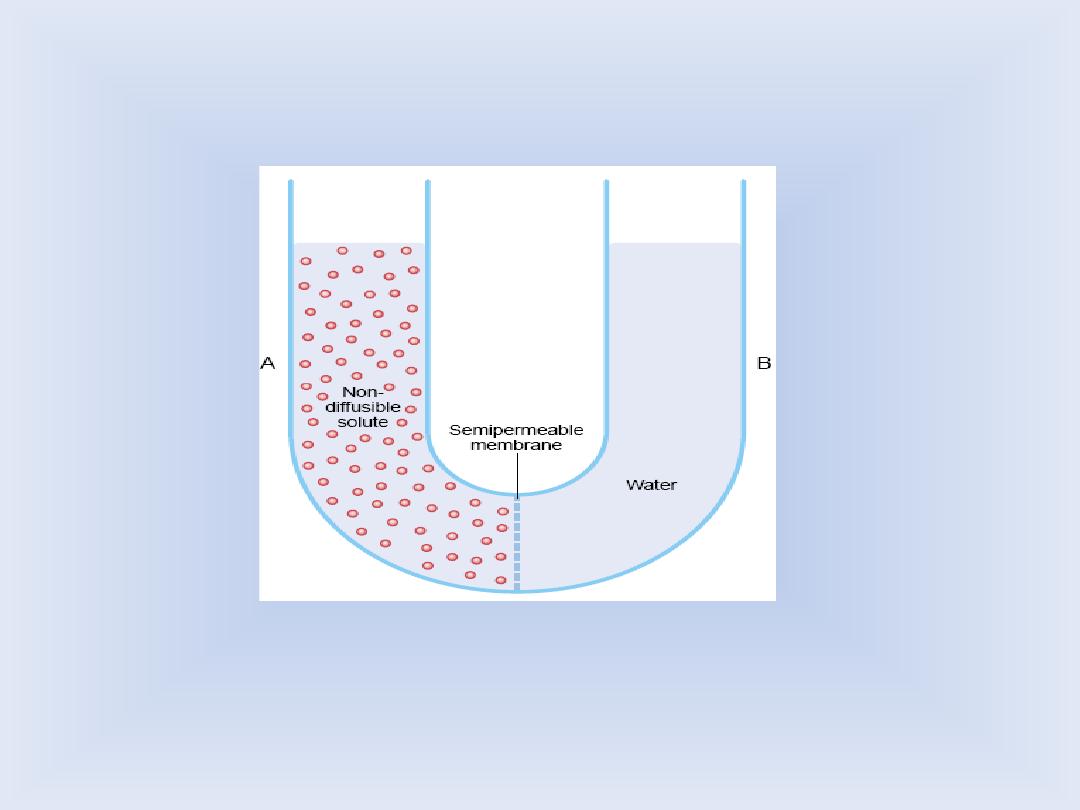
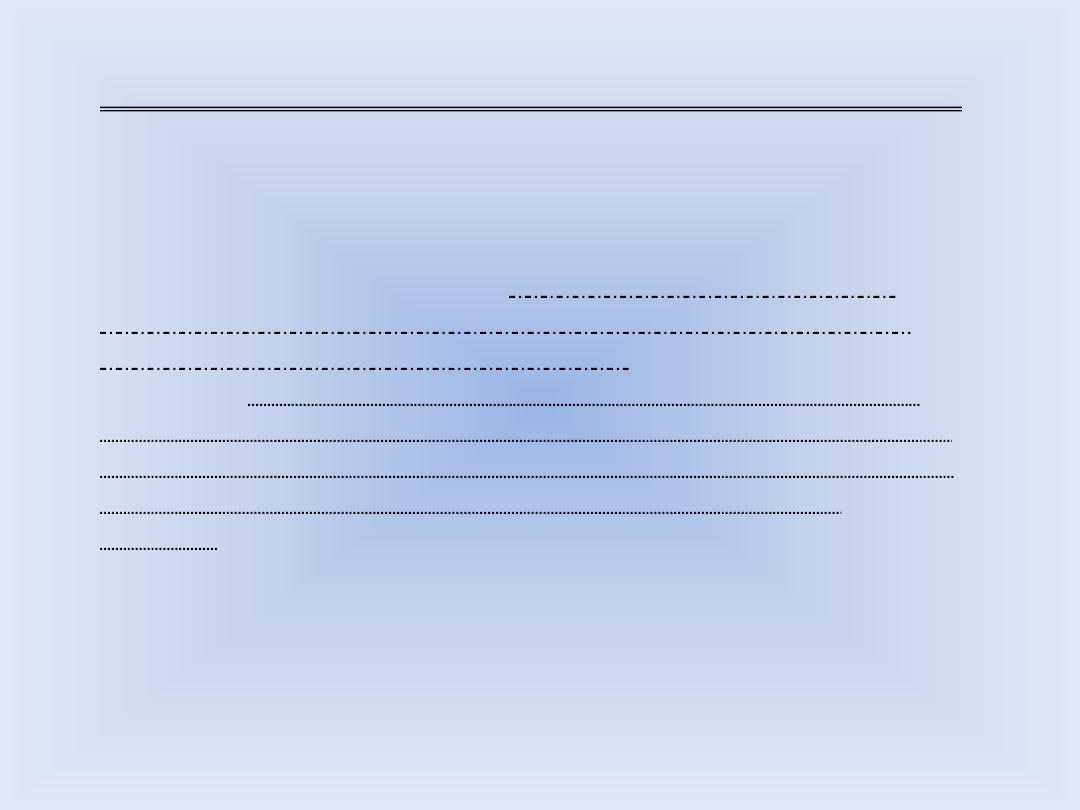
“Active Transport” of Substances Through Membranes
Active transport is divided into two types according to the source
of the energy used to cause the transport: primary active
transport and secondary active transport
the energy is derived directly
,
primary active transport
In
from breakdown of adenosine triphosphate (ATP) or of some
secondary active
. In
energy phosphate compound
-
other high
the energy is derived secondarily from energy that
,
transport
has been stored in the form of ionic concentration differences of
secondary molecular or ionic substances between the two sides
of a cell membrane, created originally by primary active
.
transport
The carrier protein in active transport is capable of imparting
energy to the transported substance to move it against the
electrochemical gradient.

Sodium-Potassium Pump as an example of Primary Active
Transport:
1. It has three receptor sites for binding sodium ions on
the portion of the protein that protrudes to the inside of the
cell.
2. It has two receptor sites for potassium ions on the
outside.
3. The inside portion of this protein near the sodium
binding sites has ATPase activity.
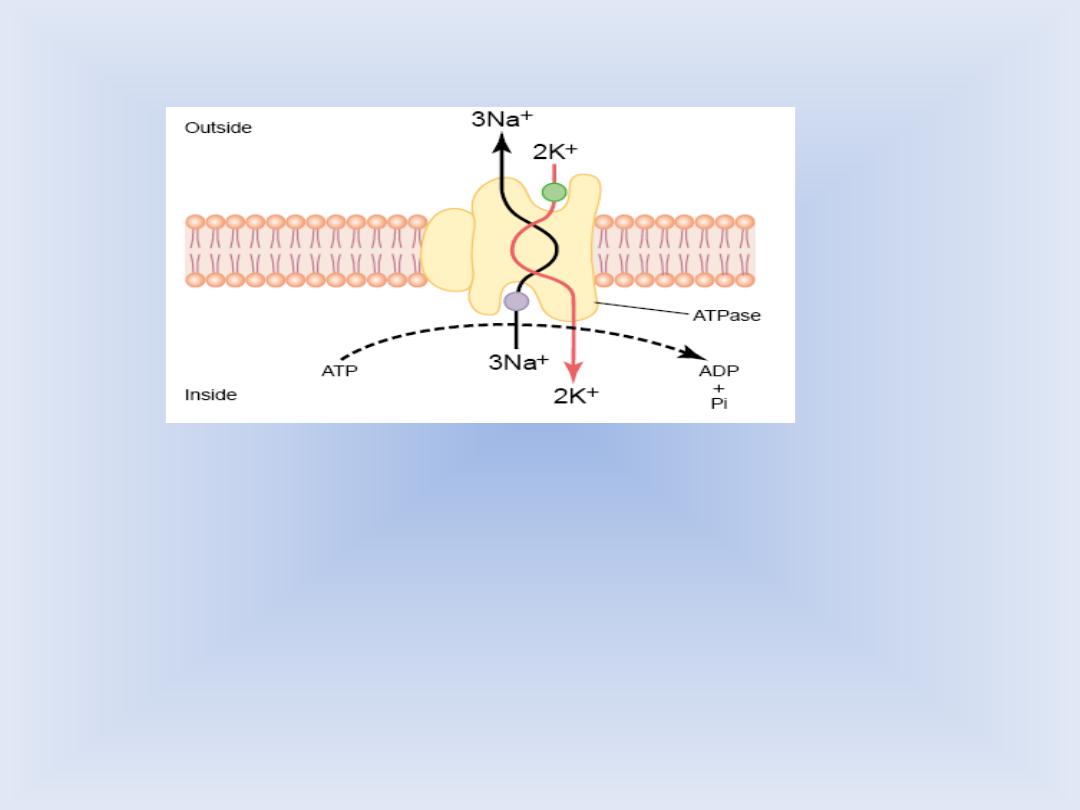
Electrogenic Nature of the Na+-K+ Pump.
it creates an
electrical potential across the cell membrane. This electrical
potential is a basic requirement in nerve and muscle fibers for
transmitting nerve and muscle signals.

Secondary Active Transport— Co-Transport and Counter-TransportWhen
sodium ions are transported out of cells by primary active transport, a large
concentration gradient of sodium ions across the cell membrane usually
develops
—high concentration outside the cell and very low concentration
inside. This gradient represents a storehouse of energy because the
excess sodium outside the cell membrane is always attempting to diffuse to
the interior. Under appropriate conditions, this diffusion energy of sodium
can pull other substances along with the sodium through the cell
membrane. This phenomenon is called co-transport; it is one form of
secondary active transport.
In counter-transport,. the sodium ion binds to the carrier protein where it
projects to the exterior surface of the membrane, while the substance to be
counter-transported binds to the interior projection of the carrier protein.
Once both have bound, a conformational change occurs, and energy
released by the sodium ion moving to the interior causes the other
substance to move to the exterior.
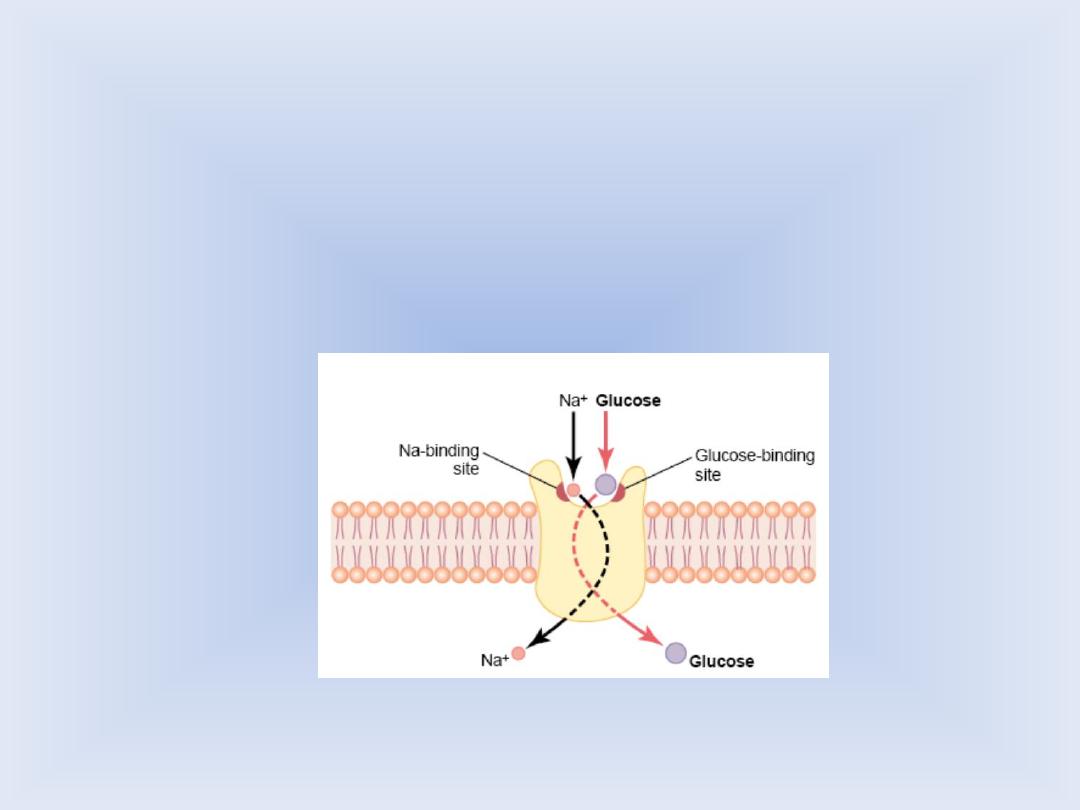
Co-Transport of Glucose and Amino Acids Along with
Sodium Ions
Sodium co-transport of glucose and amino acids occurs especially
through the epithelial cells of the intestinal tract and the renal tubules
of the kidneys to promote absorption of these substances into the
blood.

Active Transport Through Cellular Sheets
The basic mechanism for transport of a substance
through a cellular sheet is (1) active transport through
the cell membrane on one side of the transporting
cells in the sheet, and then (2) either simple diffusion
or facilitated diffusion through the membrane on the
opposite side of the cell.
